The Northern Yamanobe-no-Michi Path
2023/11/17
The Yamanobe-no-Michi Path, also known as Japan’s oldest road, runs along the eastern edge of the Nara Basin, past many significant historical sites, from ancient Imperial tomb mounds to old Buddhist temples and Shinto Shrines. The modern model of this course runs between Nara City and Sakurai City and is about 20 KM in total distance, with the JR train line conveniently running parallel to the course for (somewhat) easy access. It is not uncommon for visitors to walk only the sections of the Yamanobe that they are interested in, with the southern path – running between Tenri City and Sakurai City – seeming to be the most popular route for its plethora of historical sights, agricultural land (featuring unmanned booths packed with local goods), and of course the beautiful natural scenery which changes with the seasons. For more info on the southern path, check out our post here.
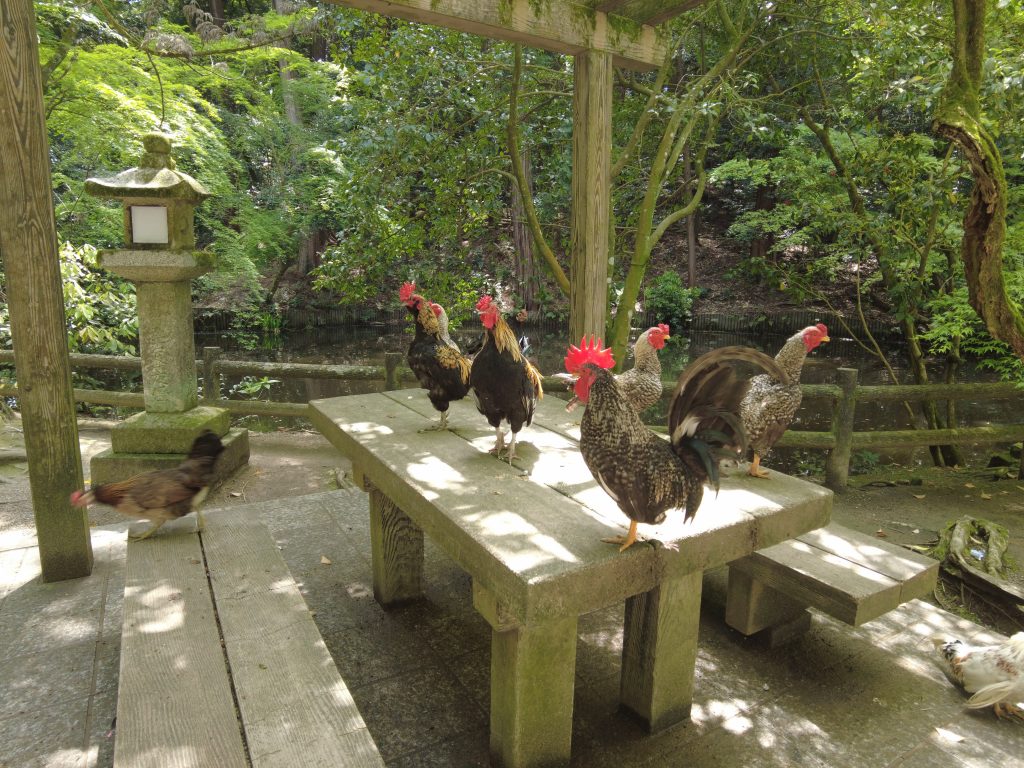
The famous roosters of the Isonokami-jingu Shrine in Tenri City, the midway point of the Yamanobe no Michi.
However, this post will highlight some of what can be found on the northern section – running between Nara City and Tenri City – which, though feeling quite different in many ways from the south (no unmanned goods booths that I could find, for example) is still well worth the time to walk for those seeking amazing natural scenery and interesting history.
There is no set path that you need to take along the Yamanobe-no-Michi, but on this occasion I started in the north at Nara City’s famous Kasuga-taisha Shrine. I also started at an irresponsibly late time in the day (as I am often wont to do for some reason), so I found myself racing against the low November sun to complete the roughly 10km required to get to Tenri City.
In recent years the route has been given some proper multi-language signage (look for “Nara Basin Loop Walking Route Yamanobe no Michi” in English on the sign) which you will find starting from the Kasuga-taisha Shrine. Near the shrine there is a group of interesting temples and shrines that you can visit within the suburbs of Nara City as the route heads south, including Shin Yakushi-ji Temple, Kagami-jinja Shrine, Fuku-in Temple, and Byakugo-ji Temple.
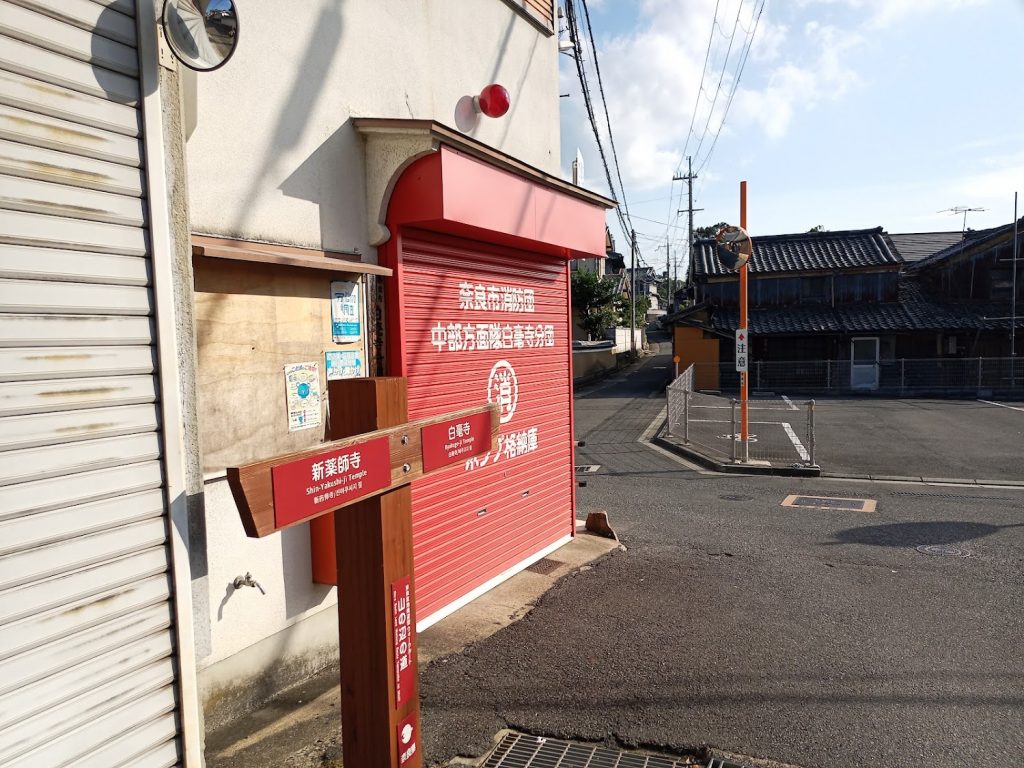
Signs like this, sometimes in locations you would not expect, point the way along the route.
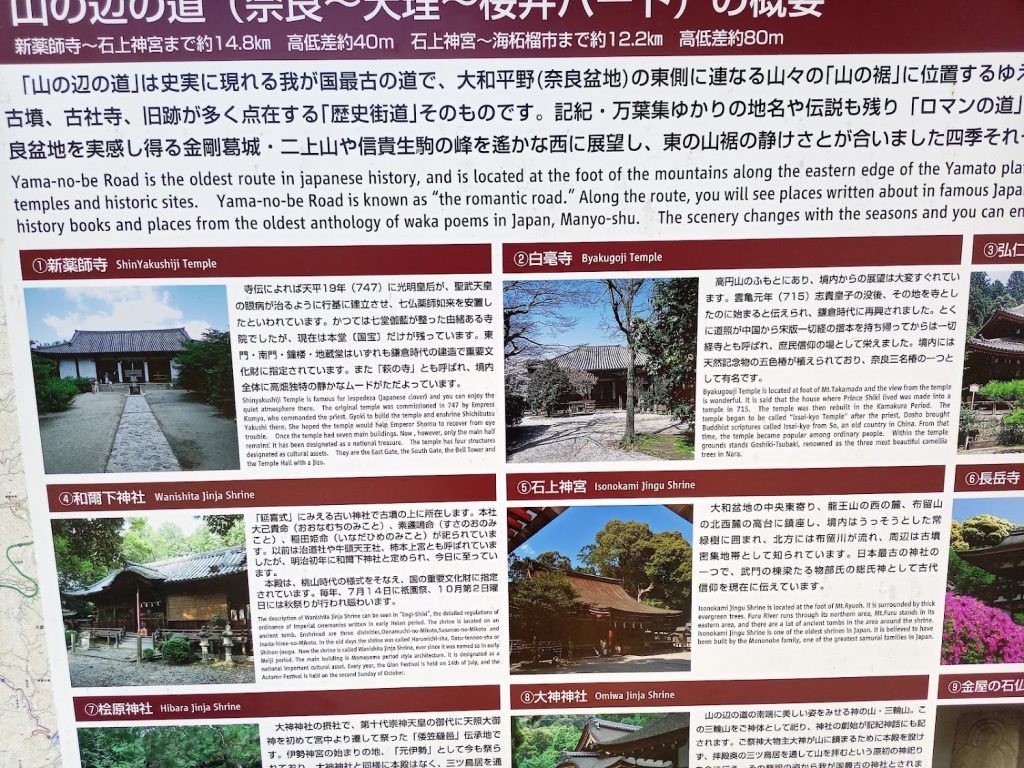
There are a couple of helpful signs with English descriptions of what can be found along the route.
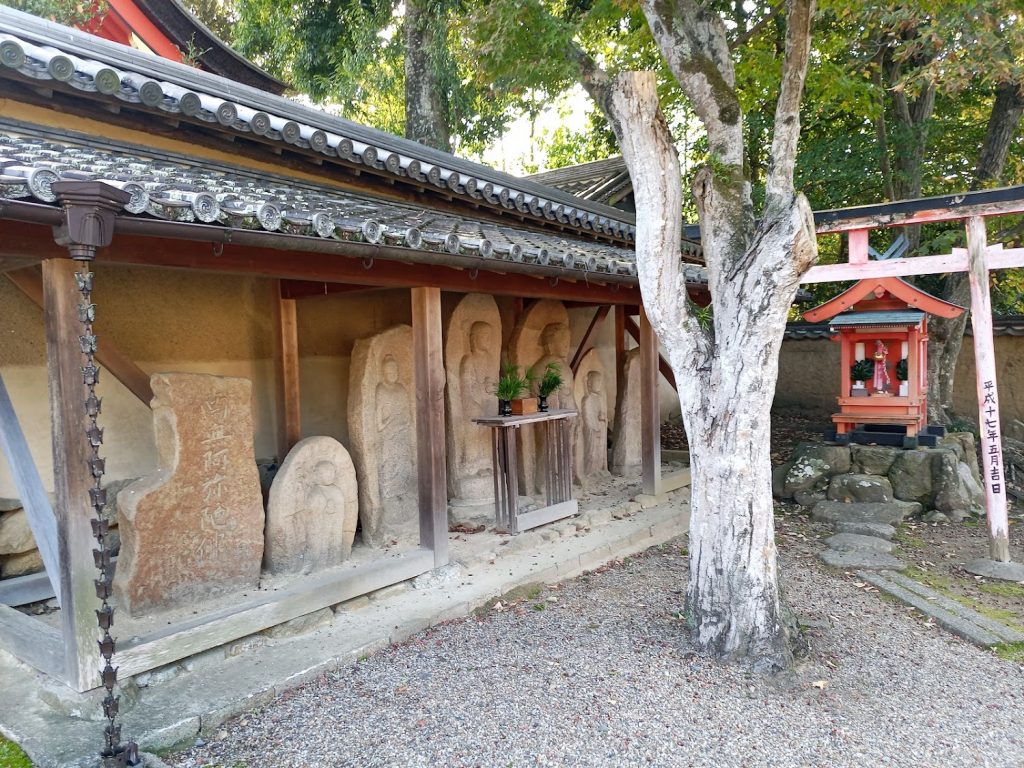
Within Shin Yakushi-ji Temple.
Compared to the southern section of the route, the path can be a bit tricky to follow here as it runs through a significantly more populated area with some larger roads that see more traffic. That being said, the folks who created this modern take on the route definitely put some thought and care into its to design to make it as pleasant as possible where they could—I found myself delightfully surprised on a number of occasions to discover the path veering off into some picturesque farmland or forested area instead of sticking to less interesting paved roads. In fact I would say the northern route actually offers much more real time walking on forested trails in comparison to the southern stretch where you don’t run into real trail until you hit the area around Mt. Miwa.
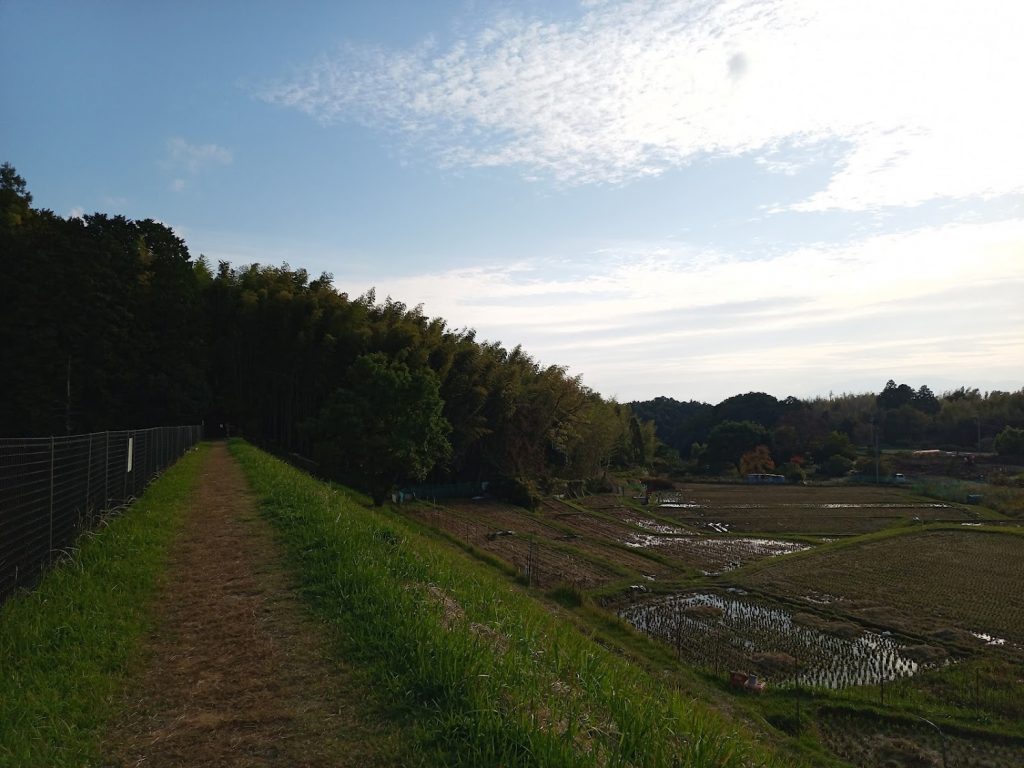
Overlooking rice fields after harvest.
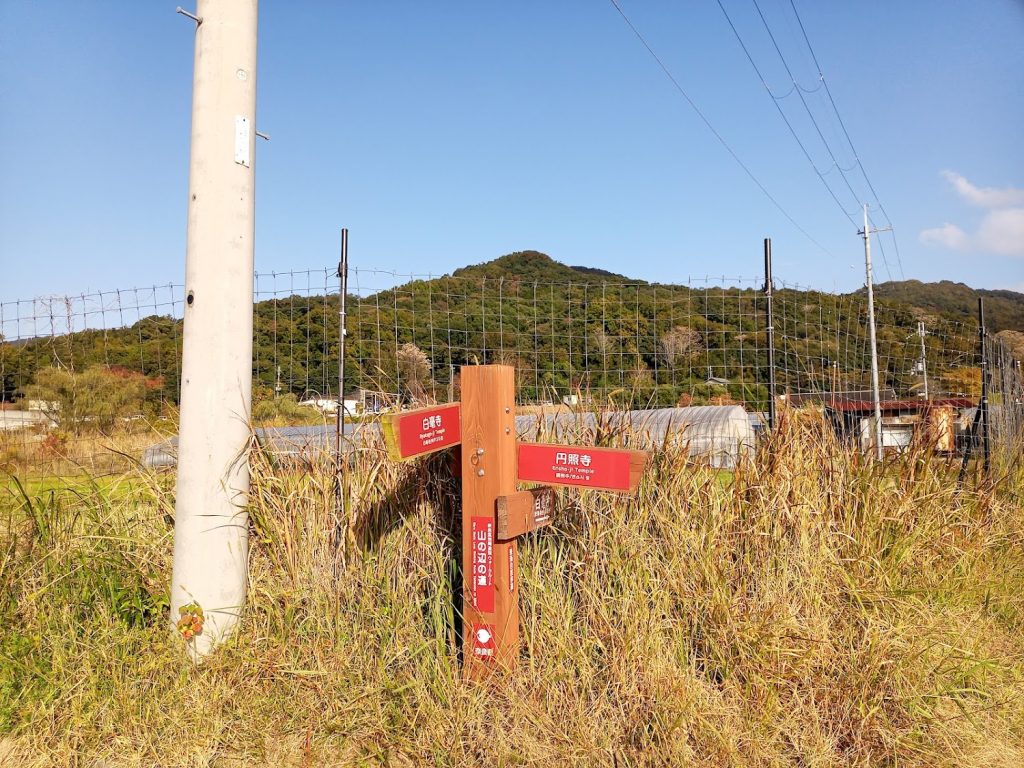
Look for these signs to mark the way.
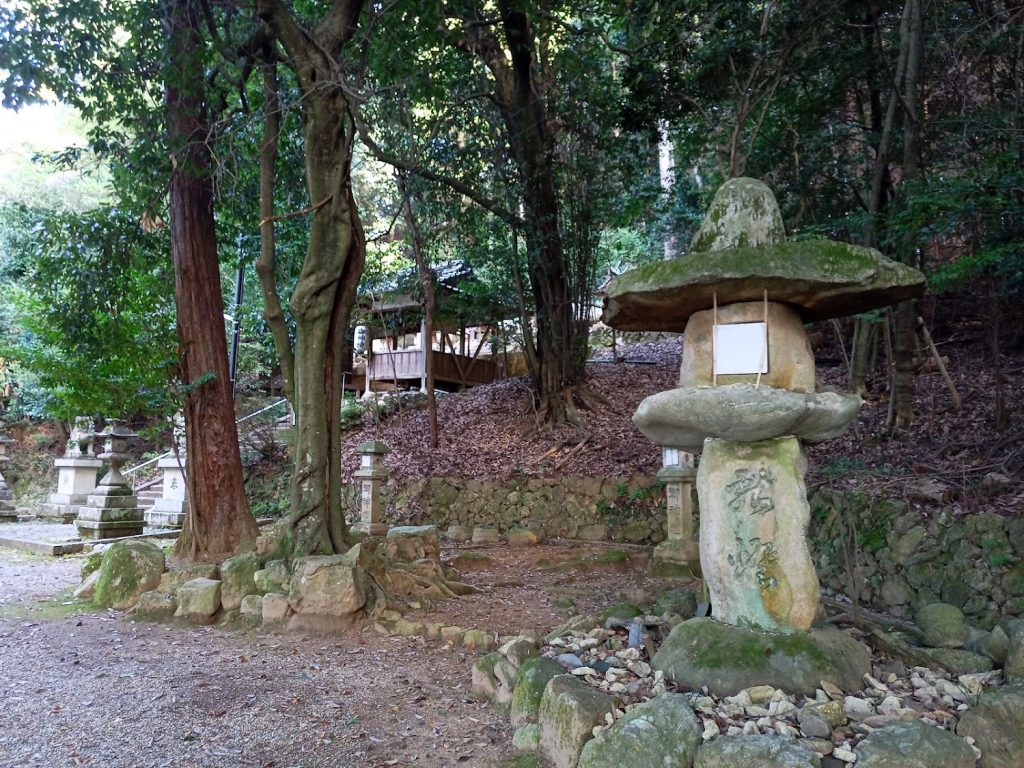
Yasaka-jinja Shrine

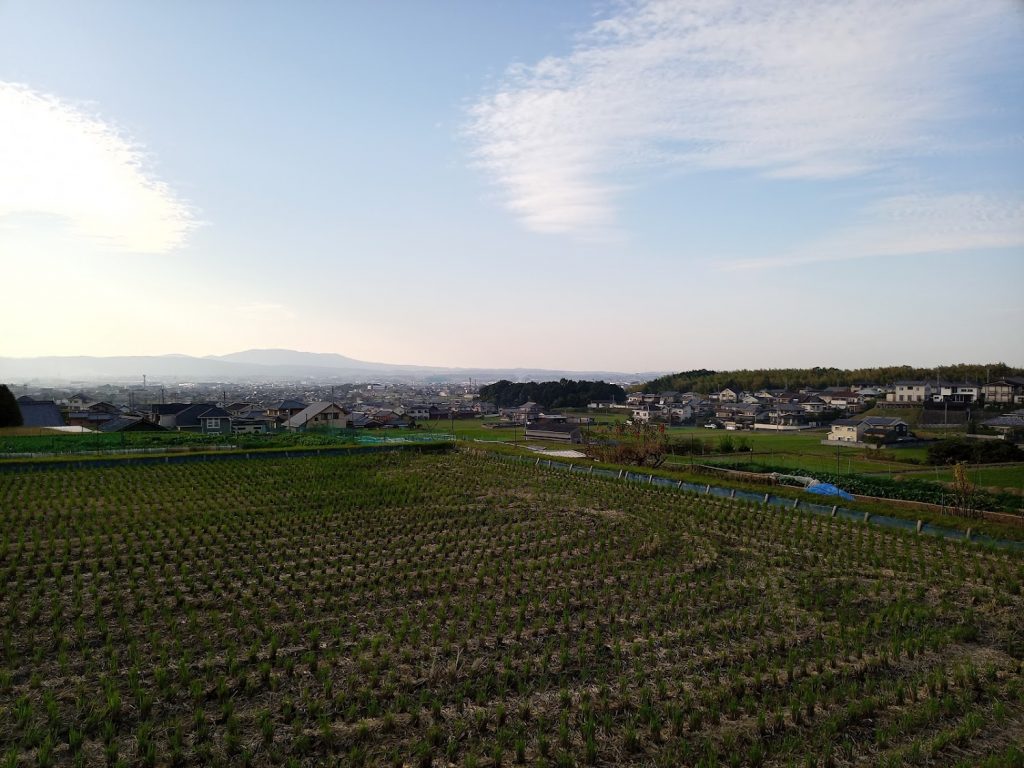
Looking west over the Nara Basin.
While I found great enjoyment from this route overall, there were definitely a few annoyances, including sections where the path is not very clearly marked, especially when you are approaching Tenri City.
However, considering it is a 10km route through a fairly populated area, it is surprising how much of the route feels peaceful and gives one the feeling of truly walking on Japan’s oldest road, transported somehow into the modern era for you to experience. I might also add that I did not see more than 2 other people who I thought may have been actually walking the route (they had backpacks), so I this is probably a great place to visit if you are looking for some solitude in your travels.
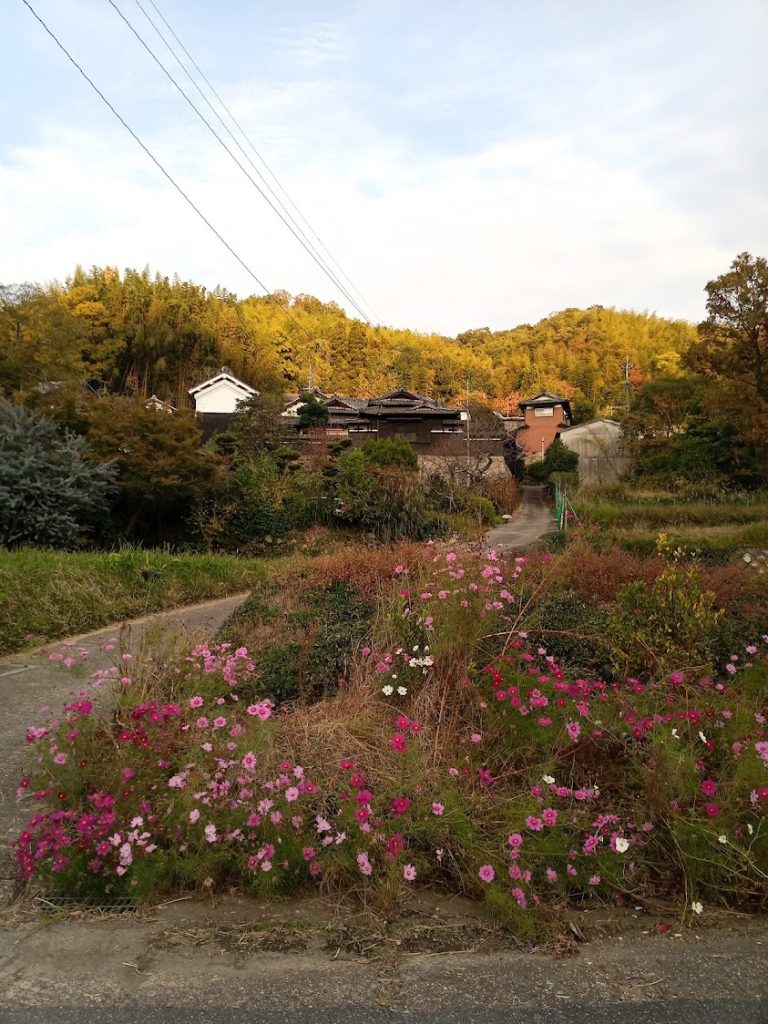
Autumn cosmos flowers
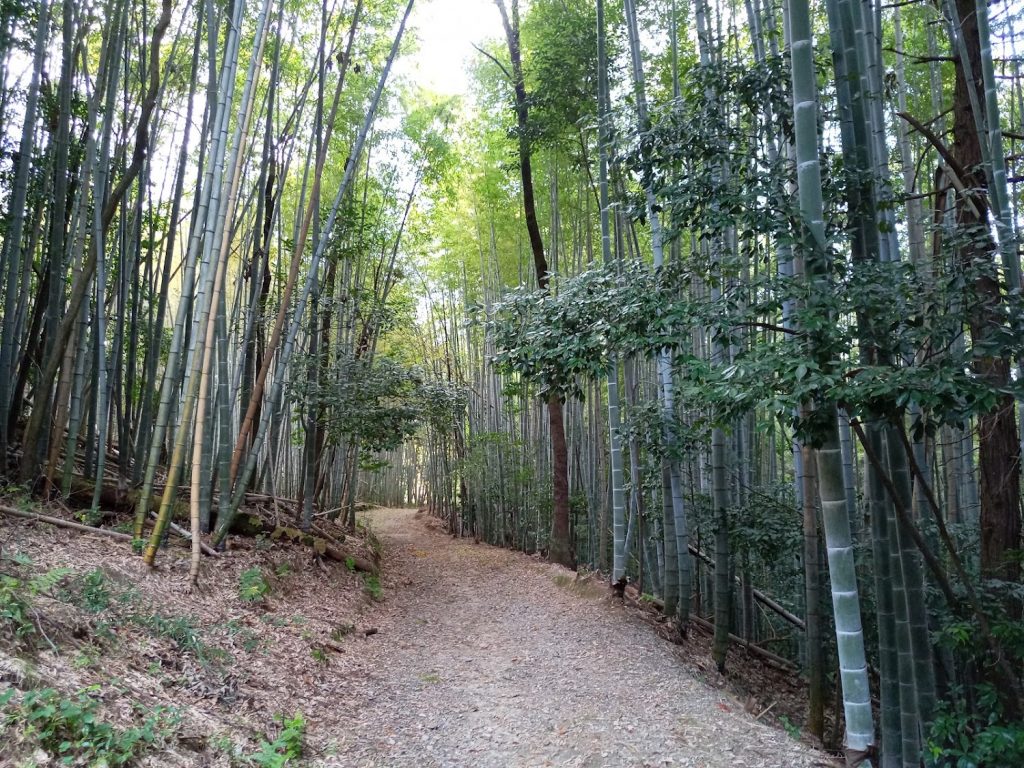
Kyoto ain’t the only place with a bamboo forest to walk through. You can do it right here in Nara along the Yamanobe-no-michi—without the crowds!
Unfortunately I could not find a lot of English information about the different historical points along the route at the actual locations themselves. However, the artistic craftsmanship and overall aesthetic design contained within many of these locales was simply beautiful to look upon, and the atmosphere really needs no explanation. I think its safe to say you will discover all sorts of interesting things to draw you in as you walk the path, such as small forest shrines or perhaps an old stone Jizo statue that gently guides you into a state of wonder at the thought of centuries of human history present here.
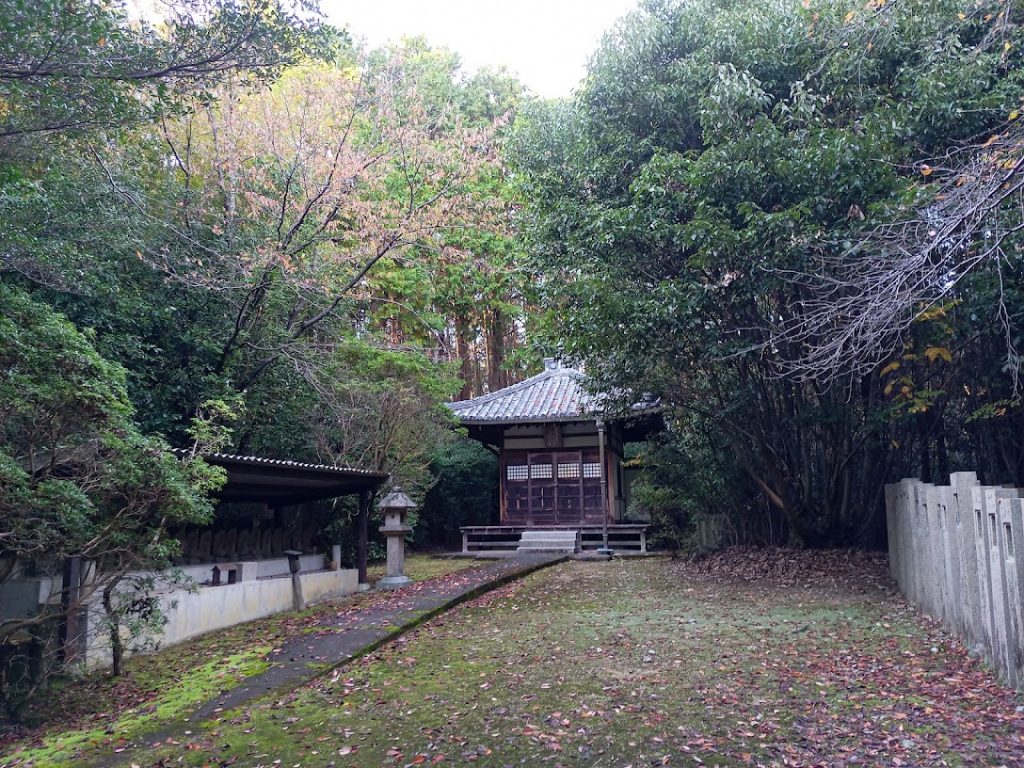
In the forest nearby Ensho-ji Temple

The route takes you through some really interesting areas.
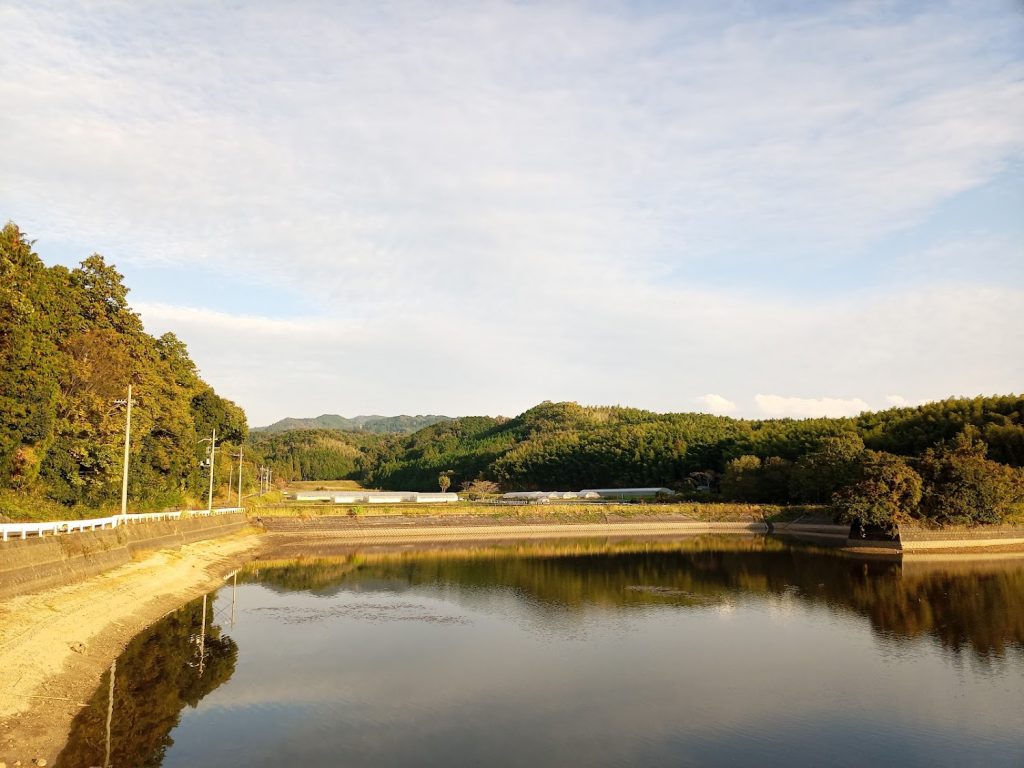
Looking east into the mountains above the Nara Basin.
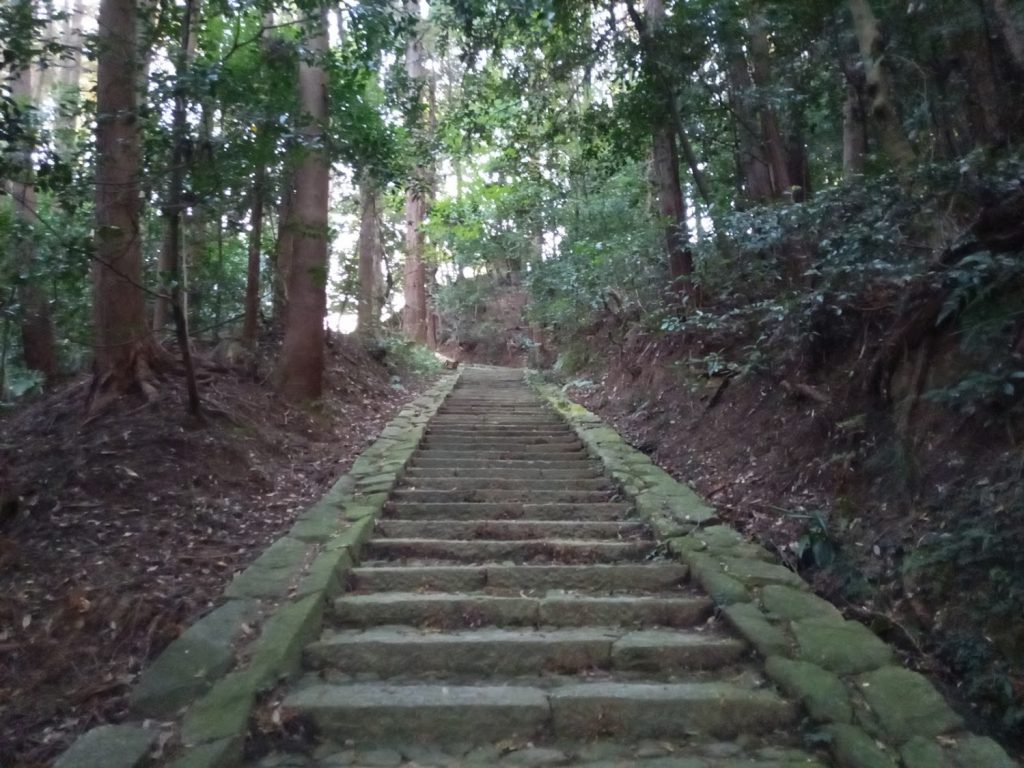
Blurry stairway leading up to Konin-ji Temple.
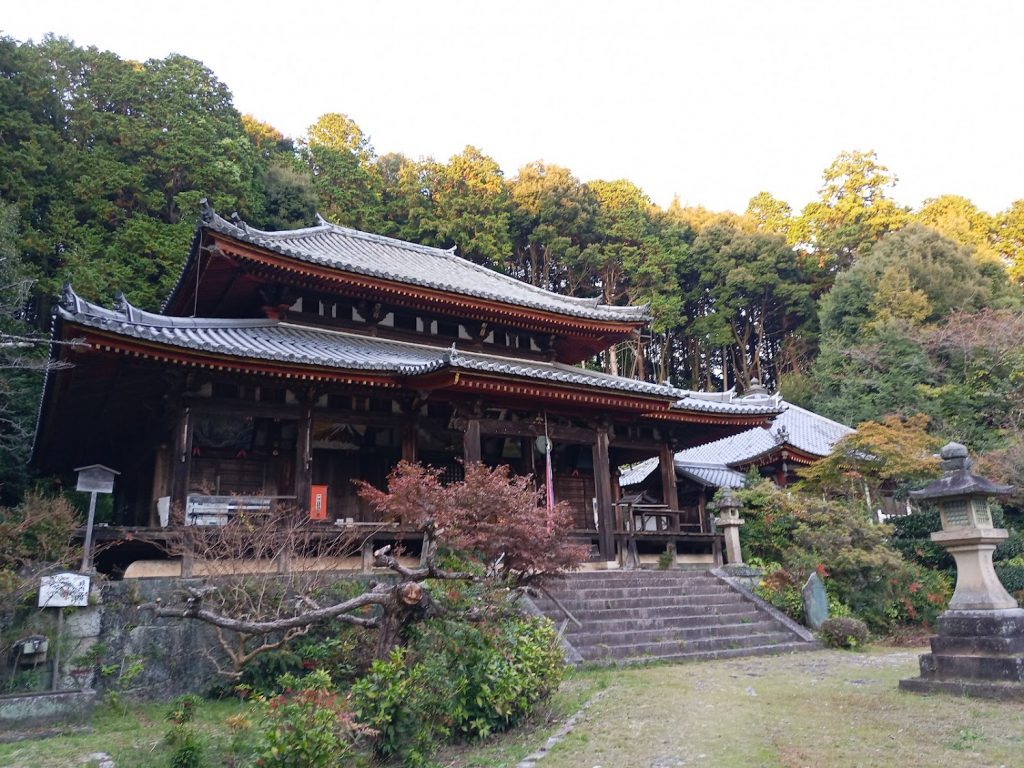
Konin-ji Temple, invisible from view until you happen upon it along the route. This was one of my favorite spots to discover during my walk on the Yamanobe-no-Michi. There did not seem to be any other visitors around at the time of my arrival and a kind woman who was working at the temple gave me directions on how to continue forward (go left and down at the stairway!).
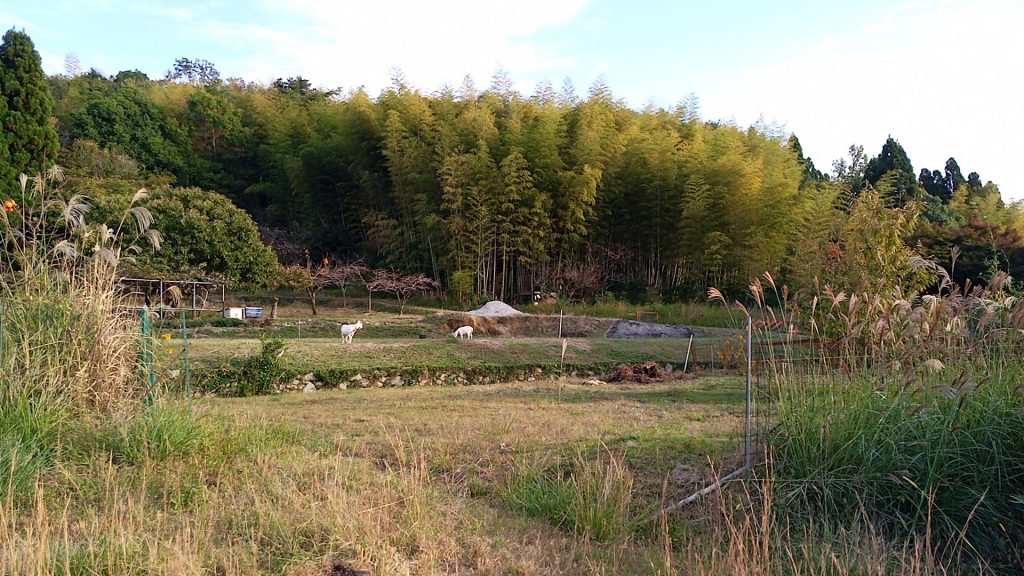
You will get bonus points if you can discover the location of these goats on the route.
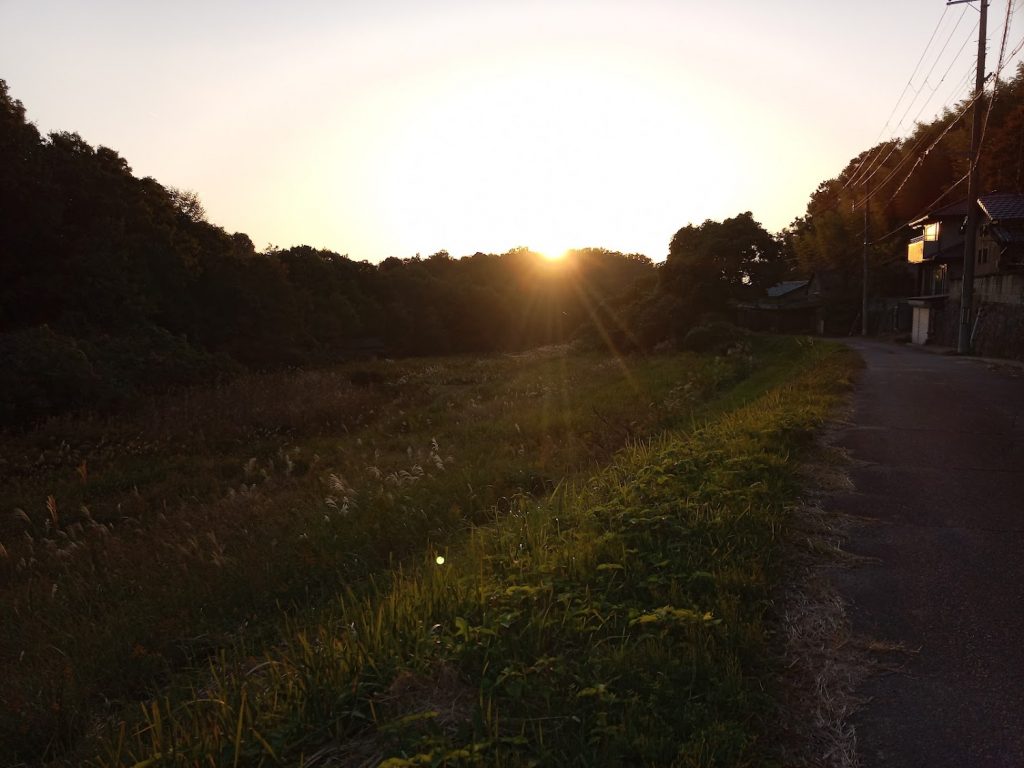
Running out of light near Tenri City.
The route eventually ends up at Tenri City’s amazing Isono-kami Shrine, from where it continues another 10km onward to Mt. Miwa and the Omiwa Shrine in Sakurai City. As for my own journey on this day, I found myself running out of daylight on the borders of Tenri City, so I cheated by beelining for the nearest train station while also being sure to stop by at Nakanishi Peanuts, my favorite place to get fresh ground peanut and almond butter, which in my opinion should totally be considered an acceptable alternative ending point for this route.
By way of conclusion, I would still recommend the southern section of the Yamanobe-no-michi route between Tenri City and Sakurai City as the best option for those who are trying to decide between the two. But the northern route discussed here, between Nara City and Tenri City, is still a great way to spend a day for those willing to put up with a little bit of fuss for some fun discovery and truly lovely scenery.
As always, for more recommendations and guided tours of the Yamanobe-no-michi, feel free to contact us anytime here at Kansai Treasure Travel.
I started my walk from Kintetsu Nara Station, going to the starting point of the Yamanobe-no-Michi at the Kasuga-taisha Shrine. From there, the route runs south to the Isonokami Jingu Shrine in Tenri City, whose nearest train access is Tenri Station. There are signs in English which mark the way, but sometimes they just don’t appear when you want them to, so maybe keep a smartphone handy.
As far as toilets / washrooms go, there are a few spots along the route where you can find public toilets that seemed to be kept fairly clean.

01
FIND YOUR FAVORITE
TRIP ON OUR WEBSITE.
SEND US AN INQUIRY.

02
PERSONALIZE THE TRIP
TO YOUR INTERESTS
WITH OUR CONSULTANT.

03
20% DEPOSIT TO CONFIRM.
BALANCE PRIOR TO ARRIVAL.
PAYMENT BY CC OR TT.

04
WE WILL
MEET YOU
AT THE AIRPORT.

05
DISCOVER THE
TREASURES!